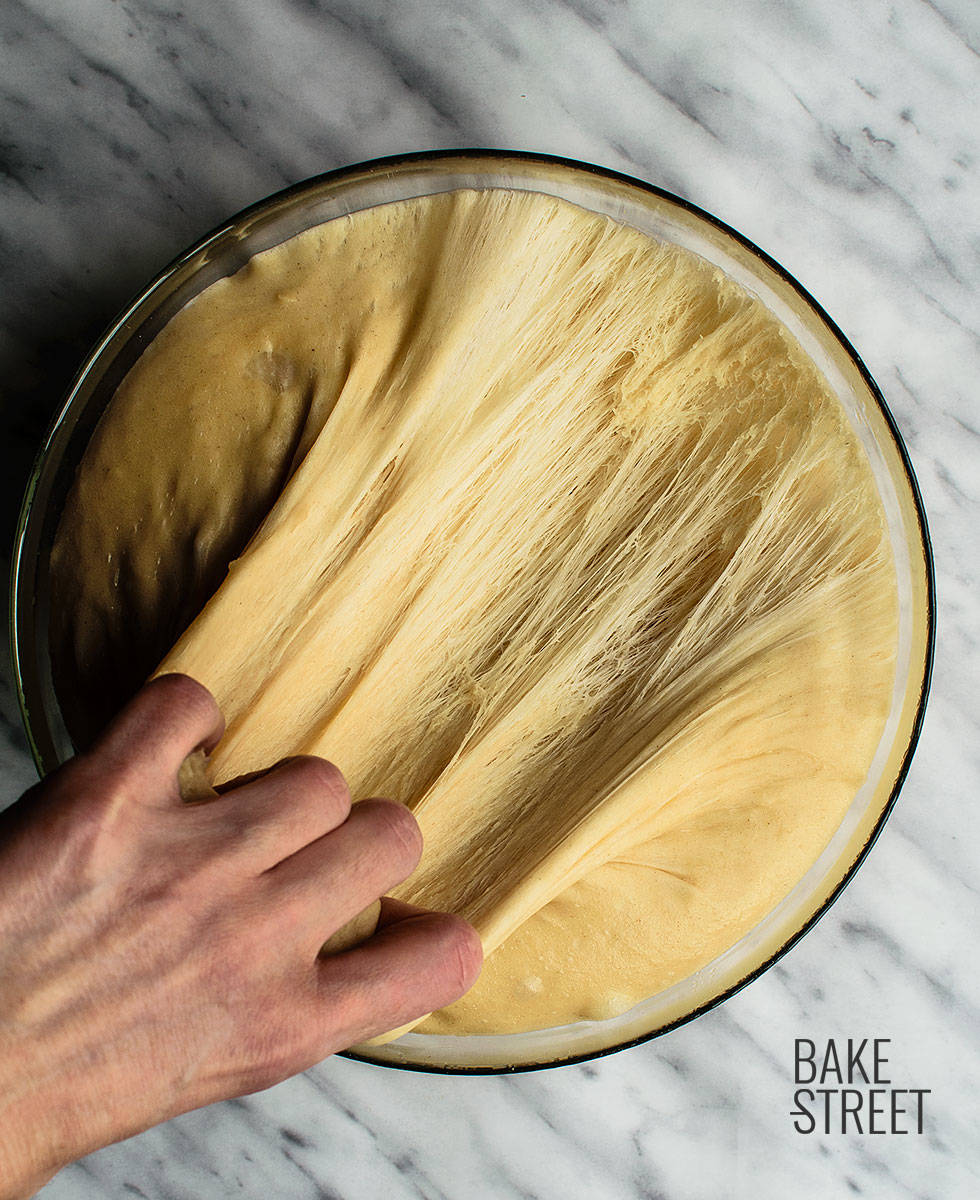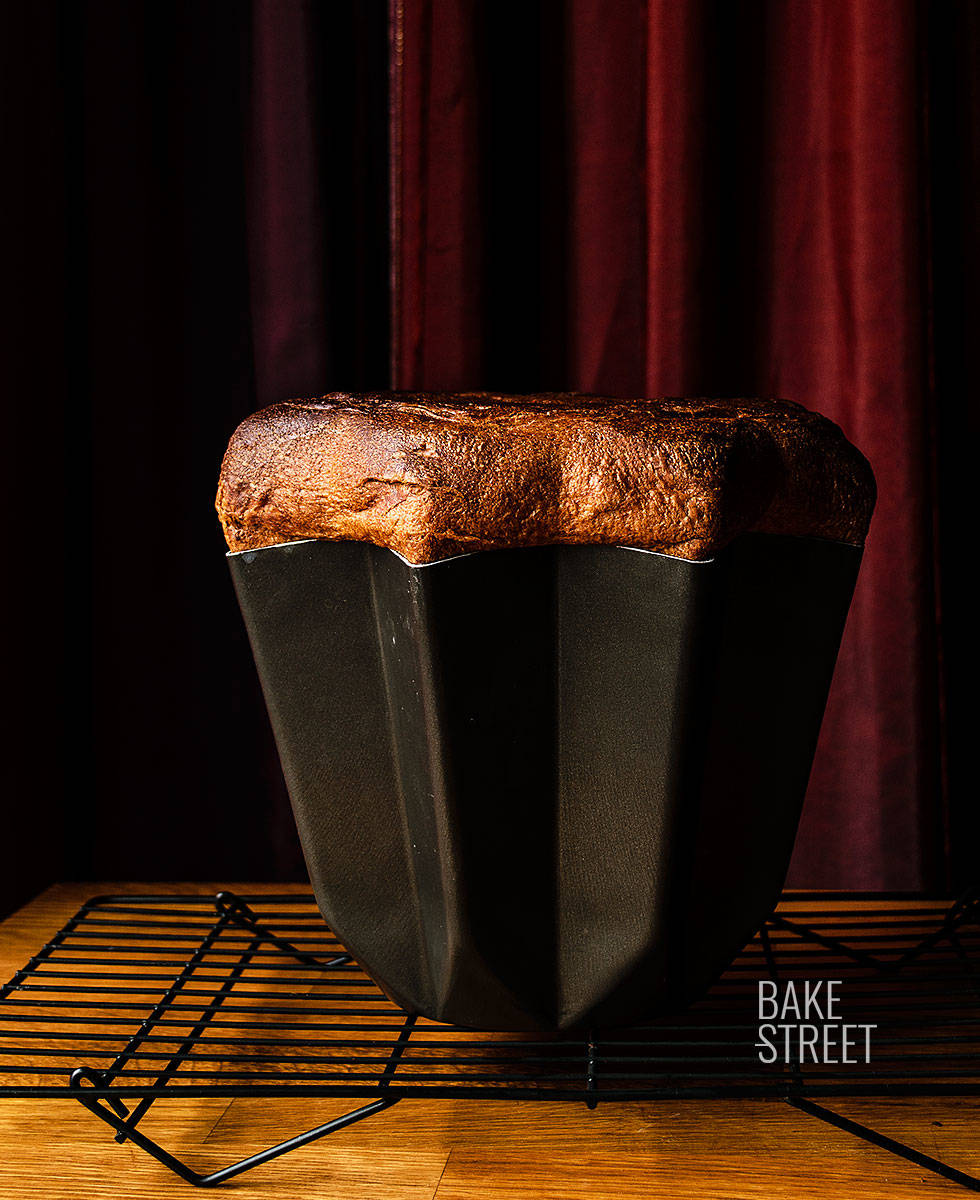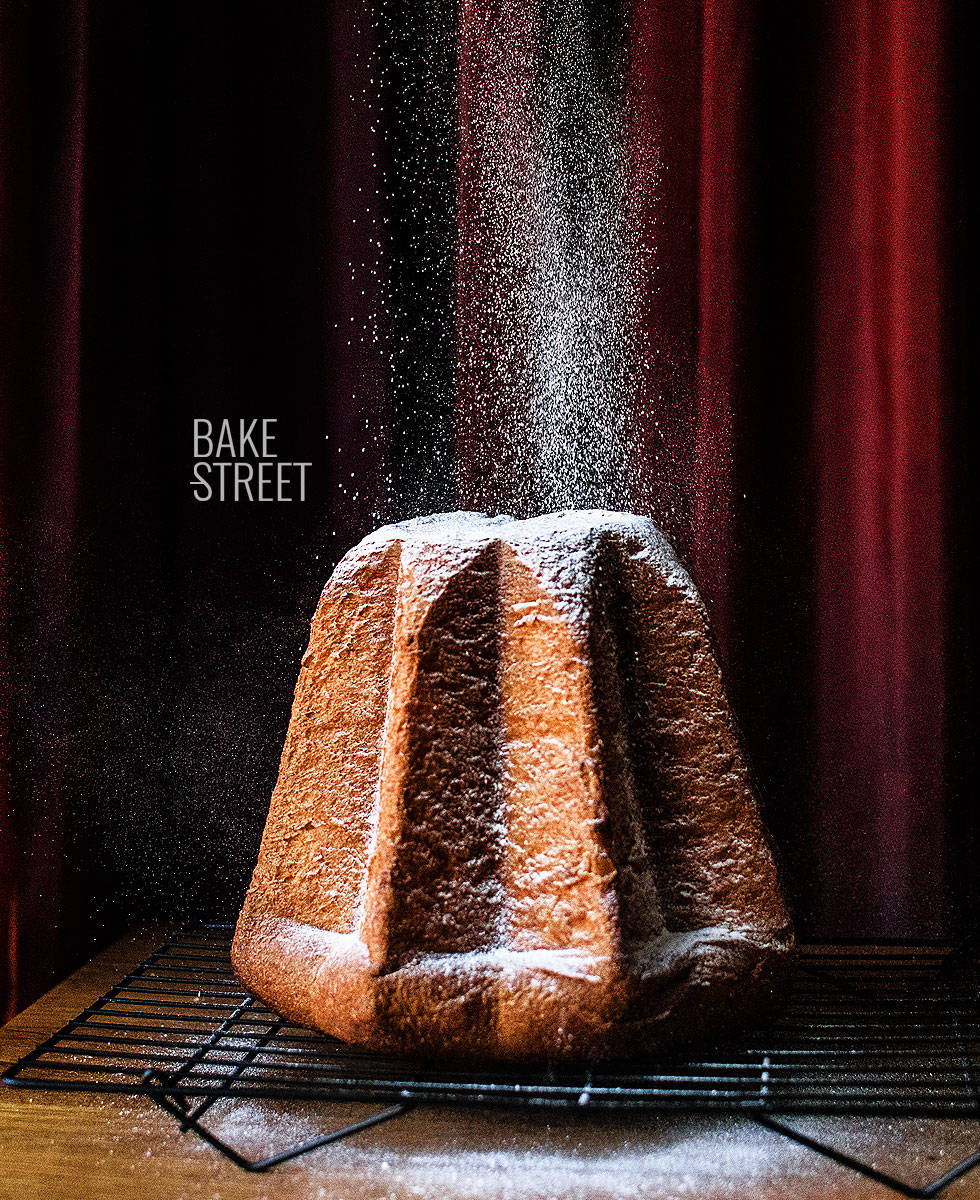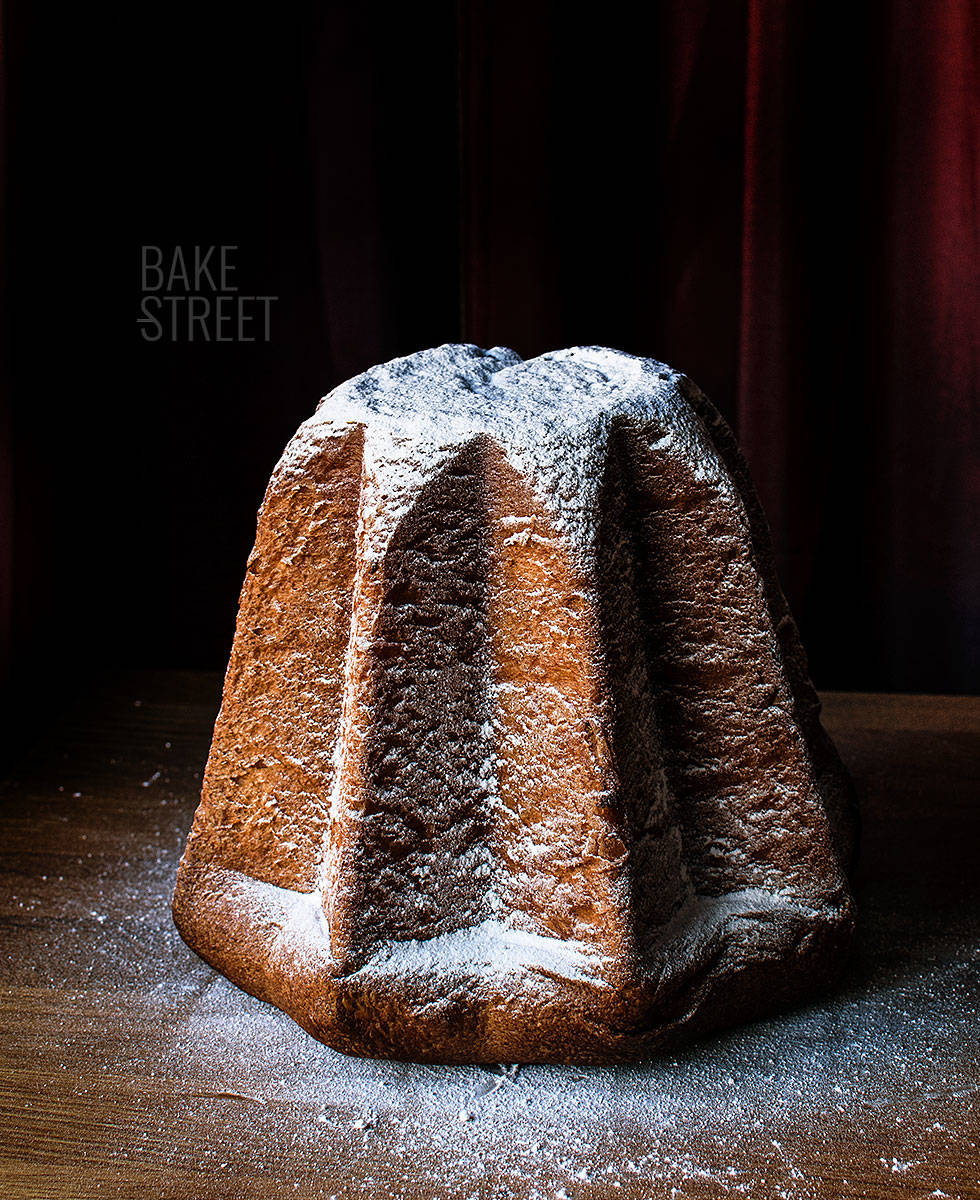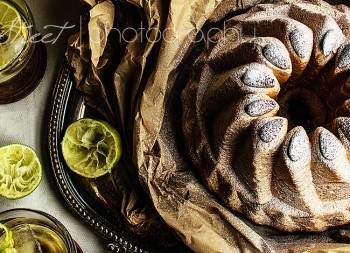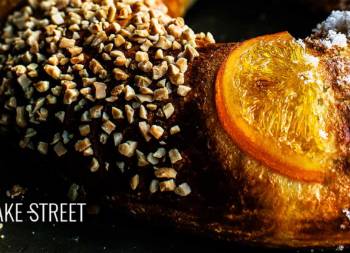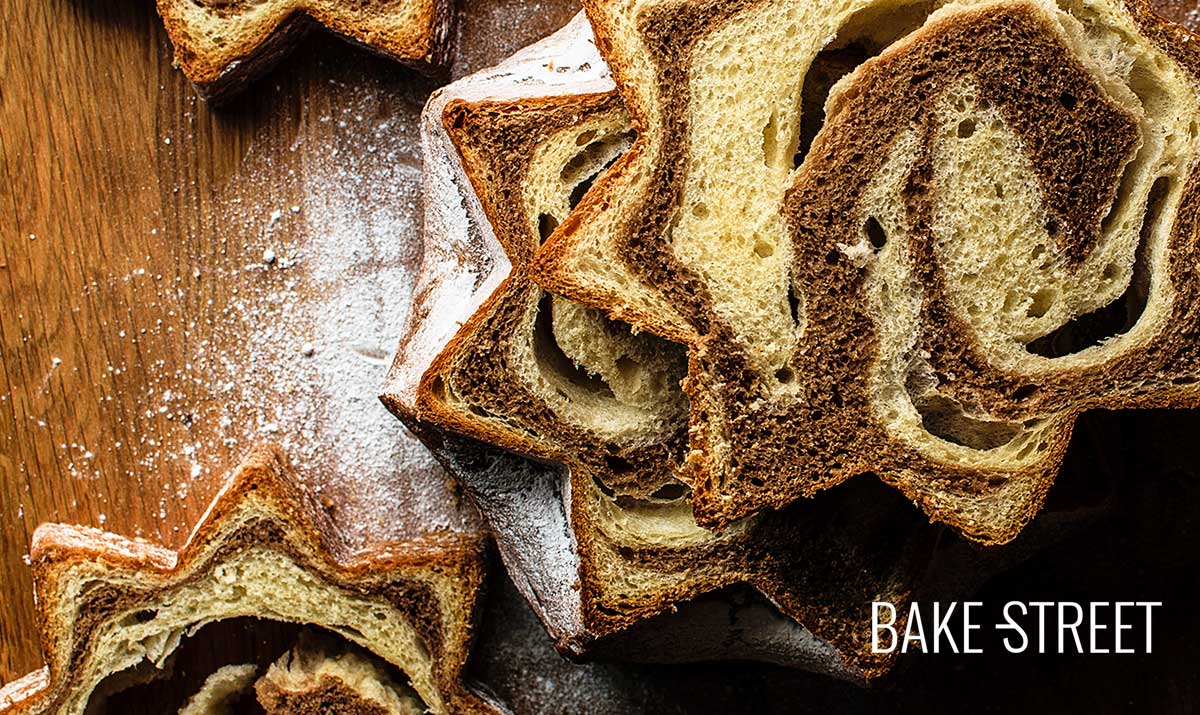
Pandoro Sfogliato Variegato, bicolor dough
We are back after a few days of rest, lots of family meals, lots of leisure and lots of time in the kitchen too! Even though I haven’t published, I have been developing recipes to start this year with a little margin. I know that at this time of year the most common is Roscón de Reyes, but I didn’t want to wait another year to leave this Pandoro Sfogliato Variegato.
I know that we can actually do it and consume it at any time of the year, because when we like something, why wait? But as I also know that we will end up saturated with sweets, I prefer to close the Christmas season with this wonder and then, we will see.
When you look at the name it is likely that the first thing that comes to mind is that it is a variety of Pandoro as we can find in the case of the Panettones. Combinations of different flavors, processes, quantities… In this case it is so, but also has a variant that captivated me and instantly fell in love. The addition of chocolate in one part of the dough to combine it with another white dough and create a spiral pattern with both. Wonderful, isn’t it?

How did I find this wonder?
Thanks to a good friend, that everything I learn and get from her is always good. One day she published in Instagram a picture of a book in which you could see a particular pandoro… Of course, I had to ask her what a book that was! She told me right away and since I’ve been very good, Santa Claus brought it to me 🙂
The book is called “PH 4.1. Scienza e artigianalità della pasta lievitata“ and, from what I have been able to read so far, it is simply spectacular. How can you imagine the book is in Italian, and no, I don’t know Italian (hopefully!). But it’s a language that can be understood quite well and with the translator by my side you can’t imagine, hahaha.
It’s a book that I’m going to take a while to read because it has a lot of theory, super interesting, but since I have to help myself from the translator, it takes a long time to advance. The recipes are quite well understood, in fact this one that I share with you today was the first I looked for because I was willing to put it into practice. But I still have to be able to apply the whole theory, which I have already started, but until I do not make more tests I will not tell you more. If you know Italian, don’t stop buying it! And if not also, look at me!

Making the Pandoro.
This is the first time I have made a pandoro with sourdough and, I must admit, it has nothing to do with the one we prepare with preferment or yeast. The dough is extraordinarily spongy, tender, soft… And its flavor is fascinating.
Its kneading process is intensive, in each step we must achieve a perfect development of gluten. This will occur when the dough is fully curled into the hook and can be checked by membrane testing.
I would like to give you some advice on how to do this recipe:
- The sourdough should not have acidity, I will tell you more about it in detail. At the moment you can check its acidity point by tasting the sourdough once it has matured. If it’s sour, you should feed it more times.
- The flour you use must be Manitoba or similar with a W=380.
- Follow the order in which each ingredient is added to make the dough.
- The butter plate should not be hard, it should be malleable, just as we do for working a Danish dough.
- In the video I show you 2 folds alone, mainly because putting more than one step does not make much sense, but we must do 3 as I specify in the elaboration.
- The final stretch, in which we superimpose both doughs, we can either stretch and cut only once (as seen in the video) or stretch and cut twice. The difference will be more laminated from both doughs. I show it to you with pictures of the two pandoros I made.
- The temperature of the dough during kneading and rising must always be around 75-78,8ºF.
- Be very patient with each step, do not try to speed up any of the steps and much less subjecting the pandoro to elevated temperatures so that rise before… Don’t even think about it, ok?
With these steps you will be able to enjoy a good pandoro that, of course, will improve with time and practice. We already know that all good things get better over time. Cured ham, cheese, wine… and practice, this will always bring us a good one followed by a better one.
PRIMO IMPASTO:
| INGREDIENTS | BAKER´S % | SOURDOUGH | REST | TOTAL |
|---|---|---|---|---|
| Manitoba flour | 100% | 45 g | 302 g | 347 g |
| Egg | 47,5% | 165 g | 165 g | |
| Sugar | 22,2% | 77 g | 77 g | |
| Water | 13% | 45 g | 45 g | |
| Butter | 26% | 90 g | 90 g |
SECONDO IMPASTO:
| INGREDIENTS | BAKER´S % | SOURDOUGH | REST | TOTAL |
|---|---|---|---|---|
| Manitoba flour | 10,8% | 45 g | 45 g | |
| Egg yolks | 4,2% | 45 g | 45 g | |
| Sugar | 85% | 38 g | 38 g | |
| Cream | 15% | 26 g | 26 g | |
| Salt | 39,1% | 3,9 g | 3,9 g |
WHITE EMULSION (made on half of the total flour):
| INGREDIENTS | BAKER´S % | SOURDOUGH | REST | TOTAL |
|---|---|---|---|---|
| Butter | 14,2% | 28 g | 28 g | |
| Honey | 1,53% | 3 g | 3 g | |
| Sugar | 11,2% | 22 g | 22 g | |
| Rum | 2% | 4 g | 4 g | |
| Vanilla | 0,25% | 0,5 g | 0,5 g |
CHOCOLATE EMULSION (made on half of the total flour):
| INGREDIENTS | BAKER´S % | SOURDOUGH | REST | TOTAL |
|---|---|---|---|---|
| Butter | 14,2% | 28 g | 28 g | |
| Honey | 1,53% | 3 g | 3 g | |
| Sugar | 11,2% | 22 g | 22 g | |
| Rum | 2% | 4 g | 4 g | |
| Vanilla | 0,25% | 0,5 g | 0,5 g | |
| Chocolate | 19,3% | 38 g | 38 g |
Ingredients
I used a pan with a capacity of 3 litres or 1 kg.
FOR PRIMO IMPASTO:
- 9 oz (257 g) Manitoba flour or similar, W=380
- 3,17 oz (90 g) sourdough hydrated 100%
- 2,7 oz (77 g) sugar
- 5,8 oz (165 g) egg, about 3 large eggs
- 3,17 oz (90 g) unsalted butter at room temperature
FOR SECONDO IMPASTO:
- 1,6 oz (45 g) Manitoba flour or similar, W=380
- 1,6 oz (45 g) yolks, about 2 large yolks
- 1,34 oz (38 g) sugar
- 0,91 oz (26 g) cream 35,1% fat
- 0,14 oz (4 g) salt
FOR THE WHITE EMULSION:
- 1 oz (28 g) unsalted butter at room temperature
- 0,1 oz (3 g) honey
- 0,77 oz (22 g) sugar
- 0,14 oz (4 g) rum
- 1/2 vanilla pod ó 0,03 oz (1 g) natural vanilla extract
FOR THE CHOCOLATE EMULSION:
- 1 oz (28 g) unsalted butter at room temperature
- 0,1 oz (3 g) honey
- 0,77 oz (22 g) sugar
- 0,14 oz (4 g) rum
- 1/2 vanilla pod ó 0,03 oz (1 g) natural vanilla extract
- 1,34 oz (38 g) 50% cocoa fondant chocolate
FOR THE FOLDING:
- 5,46 oz (155 g) unsalted butter divided
Instructions
Make primo impasto.
- In the bowl of KA or a stand mixer, pour the eggs together with the sugar. Mix with the whisk at a speed of 1 until both ingredients are homogenized.
- Remove the whisk and place the hook. Add the flour together with the sourdough, knead at speed 1 until you get a good development of gluten. It'll take about 15 minutes.
- Once we have a developed gluten, start to integrate the butter. We will do it in batches and wait for the first batch to be integrated before adding more.
- Knead at speed 1 until we obtain a perfect gluten development. The dough will be completely curled on the hook leaving the sides of the bowl clean. It'll take about 25 minutes.
- Remove the dough from the bowl of the kneader, make a ball with care and place it in a clean bowl. Cover with film or put in a large freezer bag.
- Let it rise at room temperature until its volume triples. It will take us about 18 hours at a 71,6ºF.
- Place the dough in the refrigerator at 39ºF and leave for 1 hour.

Make the emulsions.
- In a bowl mix all the ingredients of the white emulsion, set aside.
- Melt the chocolate and temper.
- In another bowl mix all the ingredients of the chocolate emulsion, set aside.
Make secondo impasto.
- Transfer the primo impasto to the bowl of the kneader directly from the fridge, you will notice that the interior has created a perfect and precious gluten mesh.

- Add the flour and knead until the gluten develops perfectly. The dough will be curled completely on the hook. It will take about 17-18 minutes.
- Pour the yolks into the dough and knead them again until they are completely integrated. It'll take about 5 minutes.
- Add the sugar and continue kneading for 7 more minutes.
- Pour the cream into a thin and continuous thread while the kneader is still working.
- Finally add the salt and continue kneading until we obtain a developed and elastic dough.
- Place the dough over a clean work surface and divide it into two equal parts.
- Introduce in a bowl and cover with film the dough we are not going to work with.
Prepare the dough with the white emulsion.
- Place the dough in the bowl of the kneader.
- Begin to knead with the help of the hook at speed 1 while slowly adding the white emulsion.
- Knead until it is fully integrated.
- Take the dough out of the bowl, make a ball and place it in a clean bowl. Cover with film or put in a large freezer bag. Set aside.
Prepare the dough with the chocolate emulsion.
- Place the dough in the bowl of the kneader.
- Begin to knead with the help of the hook at speed 1 while slowly pouring the chocolate emulsion.
- Knead until it is fully integrated.
- Take the dough out of the bowl, make a ball gently and place it in a bowl. Cover with film or put in a large freezer bag.
Refrigerate both doughs.
- Place both doughs in the refrigerator. We'll leave it until its temperature drops to 46,4ºF. To do this we will use a digital thermometer, we will prick the dough to know its internal temperature.
- It will take about 2 1/2 hours.
Make the folds.
- Remove one of the doughs from the cold and transfer it on a work table lightly sprinkled with flour.
- Stretch with the help of a roller, preferably metallic, and stretch to form a square of about 9,84 inches (25 cm) side.
- Place half of the butter, 2,71 oz (77 g), in the extended center forming a square. Remember to use it not cold and not at room temperature, see process of Danish dough.
- Fold the corners of the dough stretched over the butter, as if closing an envelope, seal well and proceed to stretch.
- Stretch with the roller shaping a rectangle with a length of approximately 12,6 inches (32 cm).
- Fold the dough as if we were closing a triptych, turn 90º so that the open part of the dough looks towards us, cover with film and let it stand 15 minutes at room temperature.
- Remove the second dough from the fridge, which we have not yet worked, and proceed to make folds in the same way as the first. Let rest for 15 minutes.
- We return with the first dough and stretch again to a length of 13,7 inches (32 cm) .
- Fold again like a triptych, cover with film and let rest another 15 minutes.
We will do this step a total of 3 times with each dough. - In the last stretch, let the covered dough stand for 15 minutes at room temperature.
Shape the pandoro.
- Lightly sprinkle a working table with flour and place the white dough.
- Stretch until it reaches a thickness of 0,4 inch (1 cm). Set aside.
- Do the same process with the chocolate dough. Stretch and reserve.
- Place the chocolate dough on top of the white dough and stretch with the roller until the thickness is reduced to 0,4 inch (1 cm).
- Divide the piece into 2 equal squares and overlap each other.
- Roll the piece on itself and place it inside the pandoro pan, previously very well greased with butter, with one of the spirals facing upwards.
- Cover with film or put into a large bag to freeze.
- Let it rise at room temperature until it reaches the edge of the pan. In my case, it took 24 hours. It lasted 15 hours at 69,8ºF (21ºC) and 6 hours at 75-78,8ºF (24-26ºC) controlled.

Bake.
- Once the dough reaches the edge of the pan, place it in the refrigerator at 39,2ºF (4ºC) for 15 minutes.
- Meanwhile, preheat the oven to 340ºF (170ºC).
- After that time, we take the dough out of the cold and transfer it in the oven. Bake for 50 minutes.
- In the middle of baking, cover with an aluminium foil to prevent it from get too brown. The internal temperature must reach 199-201ºF (93-94ºC) for the cooking to be perfect.
- Remove from the oven and leave to cool inside the pan on a rack for 4 hours.

- Remove from the pan and let it cool and dry slightly on the rack. With the widest base resting on the rack.
- Sprinkle with icing sugar and serve.

Notes
- The sourdough we use to make the pandoro must be refreshed several times before using it. We must completely remove the acidity.
- I have refreshed/fed the sourdough, in each cycle, with Manitoba flour.
- We must obtain a perfectly developed gluten at every step. Don't get ahead of yourselves in any case. If your dough takes a little longer to develop gluten, nothing happens.
- The temperature of the dough must always be around a maximum of 77-78,8ºF (25-26ºC). Now in winter it is easier to achieve this, but it would be good if you check the temperature from time to time. In case this increases, stop kneading and refrigerate it for a few minutes.

- It is important that the ingredients are of high quality, because this will always have an impact on the final result.
- The original recipe uses cocoa butter, in my case I didn't have and I replaced it with good quality of butter, you can use good white chocolate.
- The dough must be refrigerated to help maintain an optimal temperature for working with it. In the previous step to puff pastry, we must reduce the temperature to 46,4ºF (8ºC) because it is a dough with a considerable hydration and in order to stretch it we need it to be hard/firm.
- In the folding process it is not necessary to refrigerate the dough after each fold. The cold of the dough itself and the butter, will keep them in perfect condition.
- The ideal temperature for rising this dough is 75-78,8ºF (24-26ºC). In my case, except at night when I slept, I controlled it by introducing the pandoro inside the oven and turning the light off and on. That way I managed to create an environment that always fluctuated in those temperatures.
- It is a dough that grows a lot during the baking process. In my case, placing it in the final position starting from the bottom.
- Preservation: Once it is completely cold, put in a large bag with zipper clip and hold us for several days. I recommend you sprinkle the icing sugar just before serving.

Despite coming this sweet at the last minute, do not miss this Pandoro Sfogliato Variegato. I know that there are specific recipes for some dates, but for something like this, it's worth becoming a rebel!
I want to wish you a happy Three Wise Men´s night, I hope you enjoy a magical night full of love and happiness.
See you again on Monday.
Big hugs,
Eva

